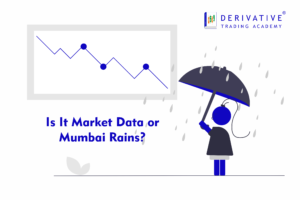Even Synthetic can work!

Pure is what we all always look out for. So is in the case of stock markets. Investors talk about pure plays, which can be consumption, banking or any other such themes. So, would traders talk about, pure data, pure indicators, clear or pure strategies.
But, that’s not always the case. One may not get a pure play on strategy always. That’s when derivatives came extremely handy. The difference between synthetic and pure is very little. For all the vanilla strategies though about, there is a synthetic play to it. There are so many instances when I hear fellow traders saying, that they were looking to buy a Call option or were looking to Short Futures, but could not do it from the fear of volatility or the pricing being too heavy. There is a way around to this and that is through synthetics. Let’s look at a few:
Long Call = Long Futures/ Underlying + Long Put.
Let’s understand this. Long Call gives the upside participation with loss restricted to the premium amount. The same can be replicated using Futures/Underlying combined with a Long Put option. So, while the long position helps you participate in the upside, the downside protection come from the Long Put. So, similar to Long Call option, one gets upside participation with downside protection. The loss is restricted in both cases to the amount of premium.
Long Put = Short Futures/ Underlying + Long Call
The Long Put gives downside participation with loss restricted to the premium amount. The risk comes from the underlying move up. The synthetic position is similar the Short Underlying/Futures position gives downside participation, the upside risk is covered by Long Call. Thus, the synthetic position gives downside participation with upside protection and in both the cases the loss is restricted to the amount of premium paid.
Long Underlying/Futures = Long Call + Short Put
Incase of Long Underlying/Futures, there is upside participation and downside loss as well. The same can be replicated using Long Call where one gets upside participation, the cost of the Long Call is covered by the Short Put, but exposes one to downside risk, creating similar payoff profile.
Short Underlying/Futures = Long Put + Short Call
Incase of Short Underlying/Futures, there is downside participation and upside loss. A combination of Long Put with Short Call gives the same. The Long Put gives downside participation, the cost of buying it is covered via Short Call. However, in the process of covering cost, one opens himself to upside risk.
Short Call = Short Underlying/Futures + Short Put
The Short Call gains when the underlying does not go up and stays fixed or weakens, in that case the gain is restricted to the premium amount. However, the loss is will be deep in case the stop moves up. The synthetic position is similar. The Short Underlying/ Futures gains in case of price correction but will bleed in case there is an upmove in the price. The gain on the downtick will be offset against the loss on the Short Put which will lose money in case of downmove, restricting the net gains to premium amount.
Short Put = Long Underlying/Futures + Short Call
The Short Put position gains maximum to the amount of premium in case of an uptick in the underlying, while the loss on downmove can be pretty high. Similar, situation is built into the synthetic which gains on the Short Call when the underlying comes off restricted to maximum to the amount of premium received. However, if the underlying moves up, there is a loss which is offset by the Long Underlying/ Futures position. Thus, the net gain is restricted to the amount of premium.
So, for all those Futures traders, who tend to avoid options, can clearly create synthetic positions, which, can managed more effectively as there are two positions involved.
Happy Trading.
Cheers!!!




